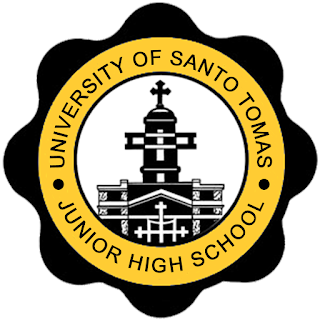Education System in UST Junior High School
The curriculum applied in the Philippines today is K12. "K" stands for Kindergarten and 12 refers to succeeding 12 years of basic education (6 years of elementary education, 4 years of junior high school, and 2 years of senior high school). Meanwhile for English grade 10 curriculum which has three components:
(1) Grammar and Composition which focuses on the different principles of effective communication,
(2) Research which appreciates research both as a process and as product,
(3) Reading and Literature which appreciates essay, poetry, narrative, drama and mythology as distinct literary genres. The topics are organized in a spiral manner such that each component emanates from previous studies from grade 7 to 9.
Source of Learning and Technology
The materials use resources that available in the library and online.
Measurement and Evaluation System
In Philippines they use some grading system as measurement by using:
- 30% to Written Works composed of unit tests, long tests, formal theme papers, book reports, research outputs, literary outputs, notebooks and other minor academic tasks
- 40% to Performance Tasks composed of quarterly major oral performances and major written outputs.
- 5% to Recitation
- 5% to Portfolio which is a collation of all the formative and summative tasks of the students.
- 20% to Quarter Assessment, that is the departmentalized quartely exams.
For evaluation
they use formative and summative assessments. The former keeps track of the
development of the understanding of the students in every subject matter. They
come in the form of short quizzes, worksheets, board exercises, drills. The
latter are final evaluation per unit in the form of unit tests and major
performances. In K12 curriculum they applied communicative techniques and BBLP (Brain-Based Learning Plan) strategies to support the 10 curriculum.
Teaching Methods
Communicative techniques often used to address the five macro language skills - reading, listening, speaking, viewing and writing and BBLP strategies is a Brain-based education strategies which the purposeful is to engage strategies based on principles that derived from solid scientific research. It emphasizes how the brain learns naturally and is based on what we currently know about the actual structure and function of the human brain at varying developmental stages. The basic principles governing BBE are:
Teaching Methods
Communicative techniques often used to address the five macro language skills - reading, listening, speaking, viewing and writing and BBLP strategies is a Brain-based education strategies which the purposeful is to engage strategies based on principles that derived from solid scientific research. It emphasizes how the brain learns naturally and is based on what we currently know about the actual structure and function of the human brain at varying developmental stages. The basic principles governing BBE are:
- brain time clock
- repetition
- active learning
- images
- novelty
- be colorful
- automatic learning
- social brain
- emotions
- develop thinking skills
I attach the English curriculum for grade 10
I
https://drive.google.com/file/d/1GY5Be_sYYjgwWanxcM-5rn1FwMqk8D6b/view?usp=sharing




Do you have any articles related to the Brain Based Principles of UST JHS? I guess you're a participant of SEAMEO program
BalasHapus